WHITEHEADII Harvey, 1862
Synonym : Crassula divaricata sensu Schonland & Baker f. (1902)
Section Squamulosae
Distribution : Locally common in the north-western Cape Province from the Orange River to near Bitterfontein ; growing on lower gravelly slopes among low vegetation.
Description by Tölken, 1985 :
Perennials forming shrublets rarely higher than 15 cm, usually much branched, branches covered with short recurved and adpressed hairs when young and with rough flaking bark when older, old leaves deciduous.
Leaves narrowly lanceolate, 3 - 5 x 1 - 1.5 mm, sharply acute, flat or slightly convex above, strongly convex below, with minute papillae and marginal cilia when young, green to brown.
Inflorescence an irregular thyrse with one or several cymose clusters of usually sessile flowers.
Flowers : Calyx : Sepals lanceolate-triangular, 2.5 - 3 mm long, acute, covered with minute papillae or with few scattered hairs and with few slightly recurved cilia, green, corolla tubular to urn-shaped, fused basally for 1 - 1.3 mm, white often tinged red and fading to cream, petals oblong to subpanduriform, 3 - 4 mm long, obtuse and each with prominent dorsal appendage, usually scarcely recurved, stamens with brown anthers.
Flowering time : September, October.
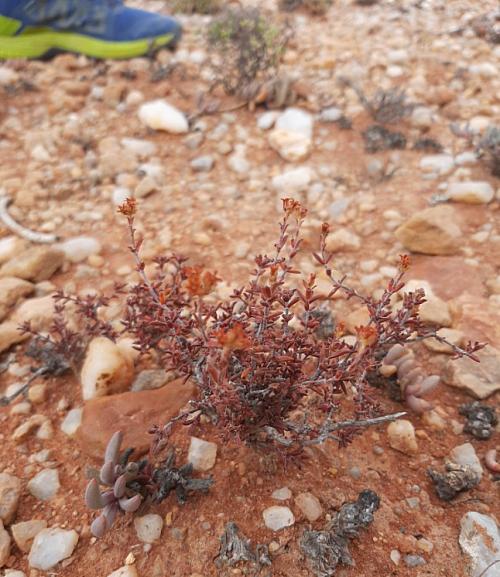
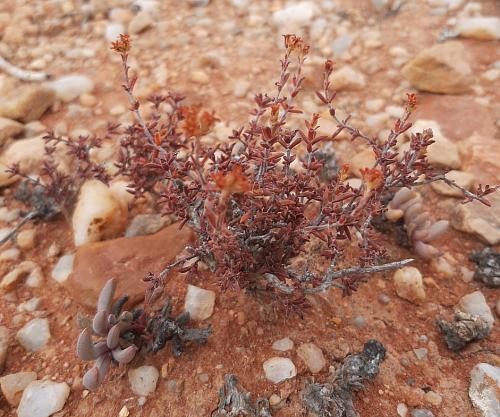
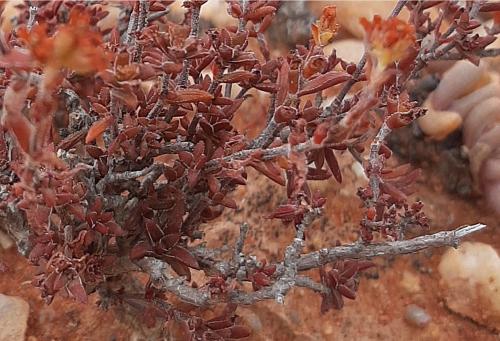
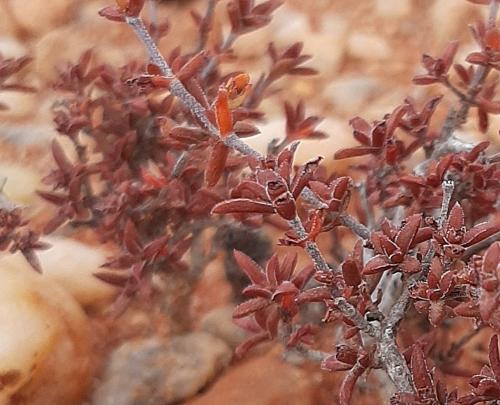
The unusual flower colour is due to a preceding heatwave dessicating the flowers.
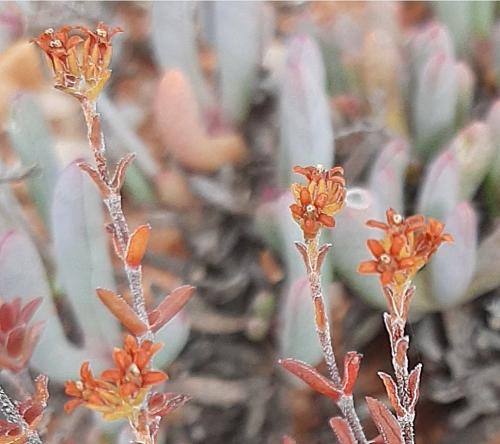
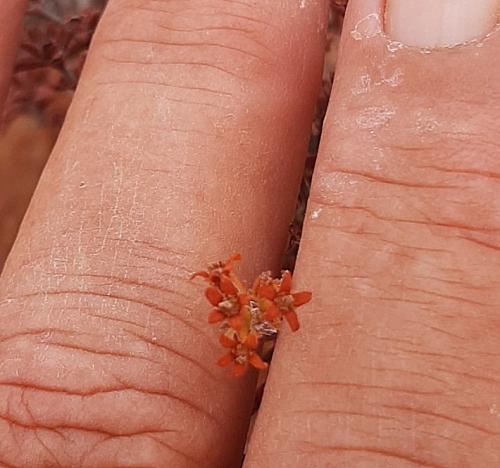
Photos Jacquie Koutsoudis